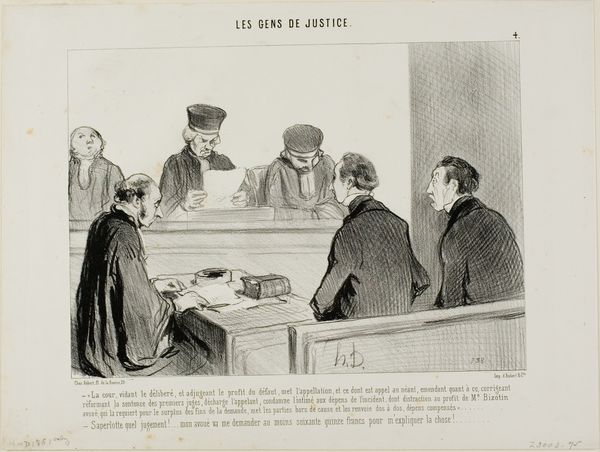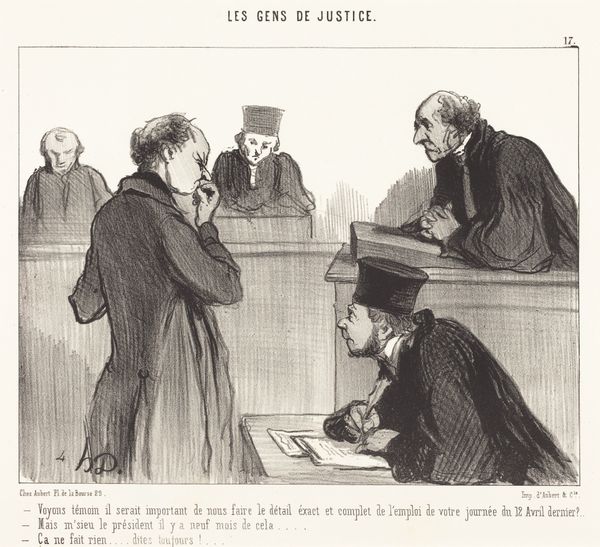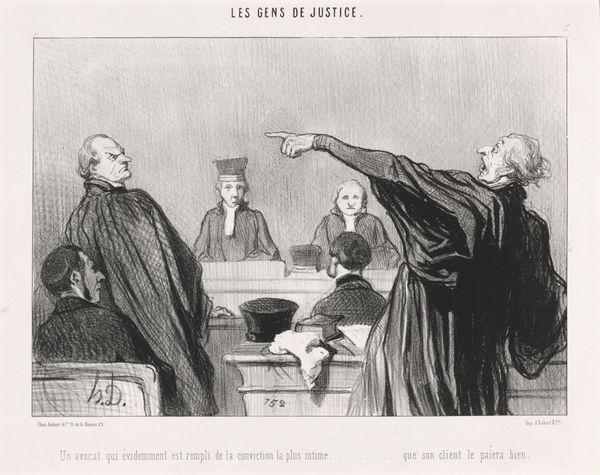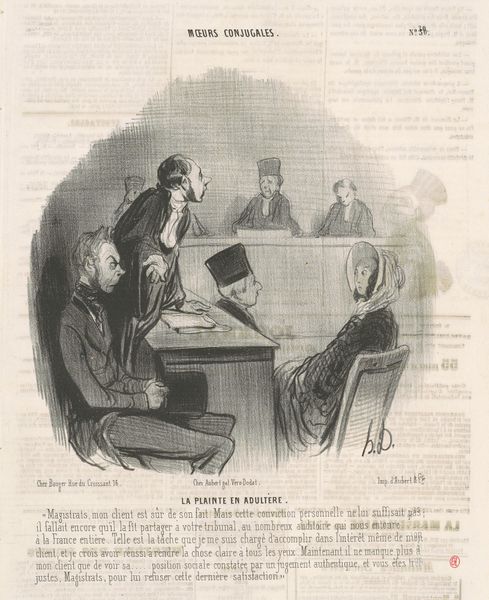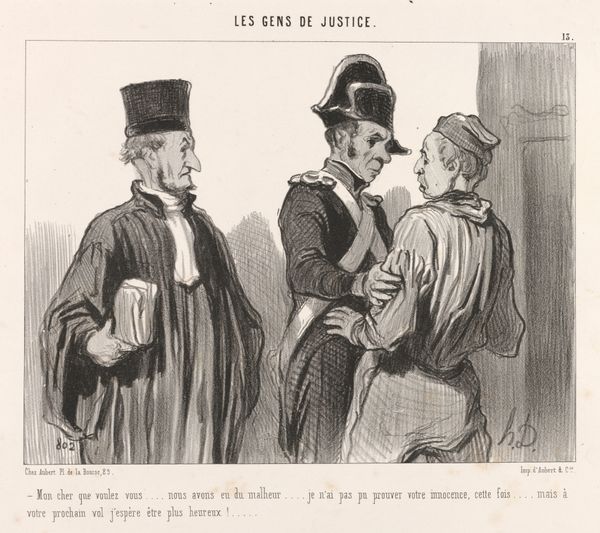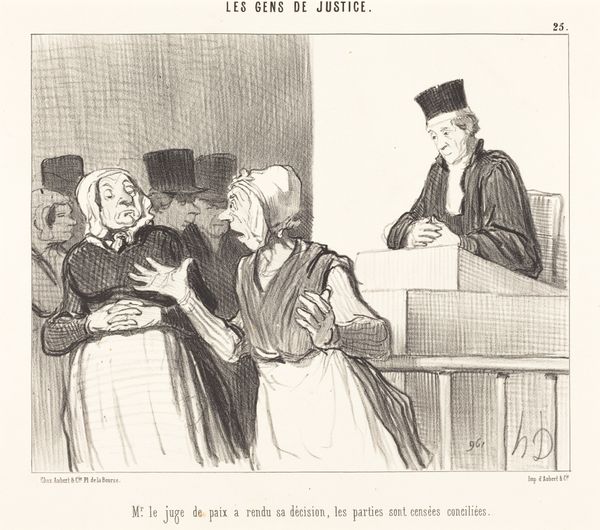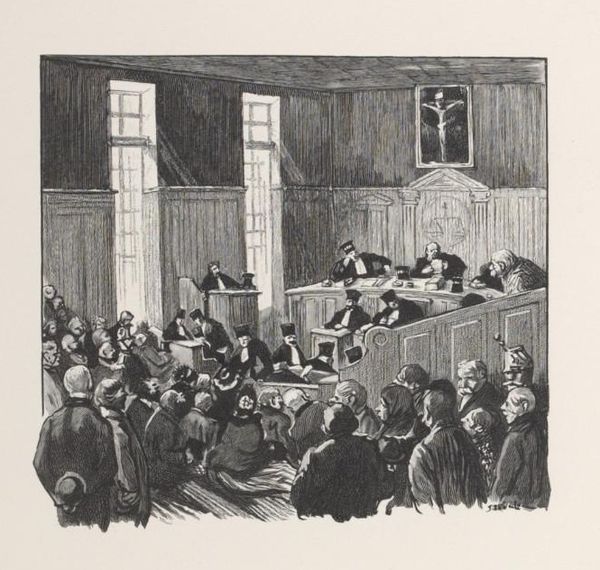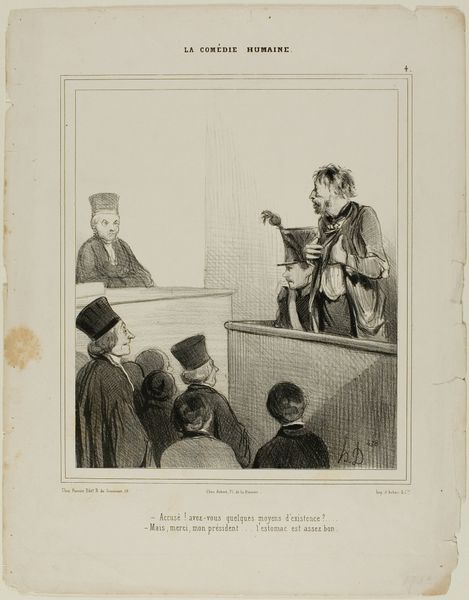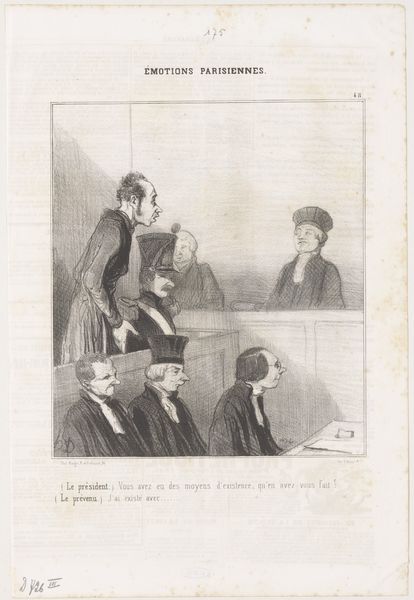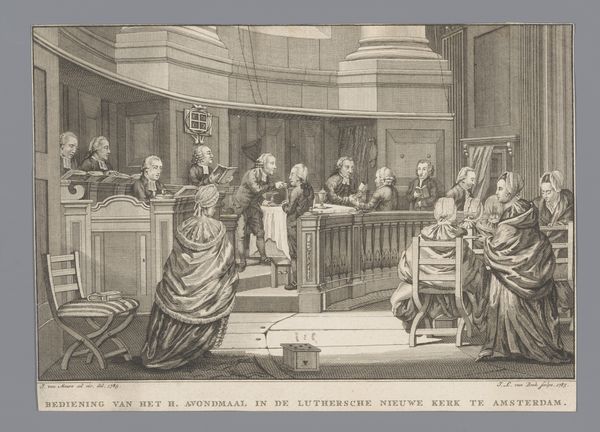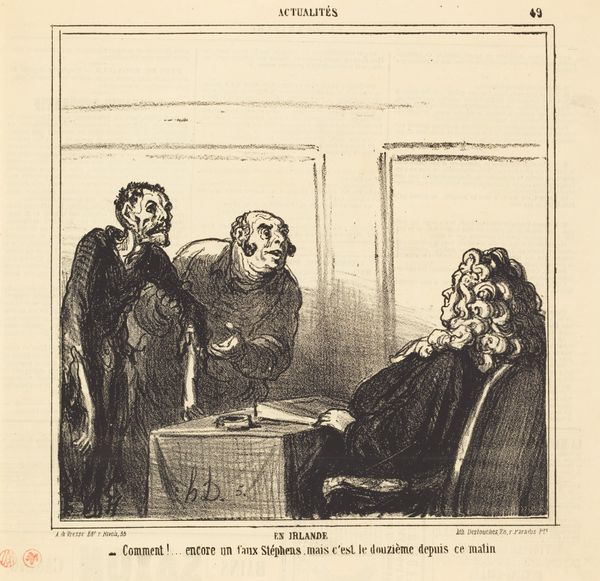
The defense compliments the talent of the prosecution, while the Attorney General admires the eloquence of the defense. The judge applauds both of them and everybody is satisfied, except he accused, plate 16 from Les Gens De Justice 1846
0:00
0:00
drawing, lithograph, print, paper
#
drawing
#
narrative-art
#
lithograph
# print
#
caricature
#
figuration
#
paper
#
romanticism
#
france
#
genre-painting
Dimensions: 180 × 246 mm (image); 251 × 322 mm (sheet)
Copyright: Public Domain
Curator: This lithograph, dating back to 1846, is by Honoré Daumier and is part of a series called "Les Gens De Justice," offering a sharp commentary on the French legal system. Editor: My initial reaction is a feeling of claustrophobia and cynicism. The scratchy lines, the way the figures are crammed together, the heavy ink... it speaks of corruption and discomfort. Curator: Daumier was a master of social critique, wasn't he? You see that masterful use of lithography – think about the physical labor of creating those tonal gradations with greasy crayon on stone. That's not just about aesthetics; it’s about mass production, about making this critique widely available. Editor: Absolutely. This print becomes a powerful vehicle for challenging institutional authority, particularly the justice system, and reflects the romantic sensibility pervasive during that period. Look at the inscription underneath – the world is delighted, except for the accused! What a damning statement on the priorities of the court. Curator: Right. It is important to remember the process: this wasn't a singular artwork for a wealthy patron; this was designed for mass consumption in journals. He is directly addressing and attempting to influence public opinion and shape social awareness on matters of jurisprudence. Editor: And it's done with such masterful caricature! The puffed-up faces of the lawyers, the drooping despair of the accused… He exposes the theatricality of the courtroom, the performances of power that disregard individual lives. Even the cheap paper stock, its very materiality, speaks to the everyday nature of this injustice. Curator: Precisely! Considering this piece and his others, what are we really consuming when we purchase something like this and consider the cultural contexts? How have perceptions of justice changed? And if so, have they truly improved? Editor: This image still resonates so strongly. It makes you wonder, how much has really changed since 1846? Are we still susceptible to the same theatrical displays and corrupt practices within our legal institutions? It really does provoke questions of public perception versus individual experience.
Comments
No comments
Be the first to comment and join the conversation on the ultimate creative platform.
